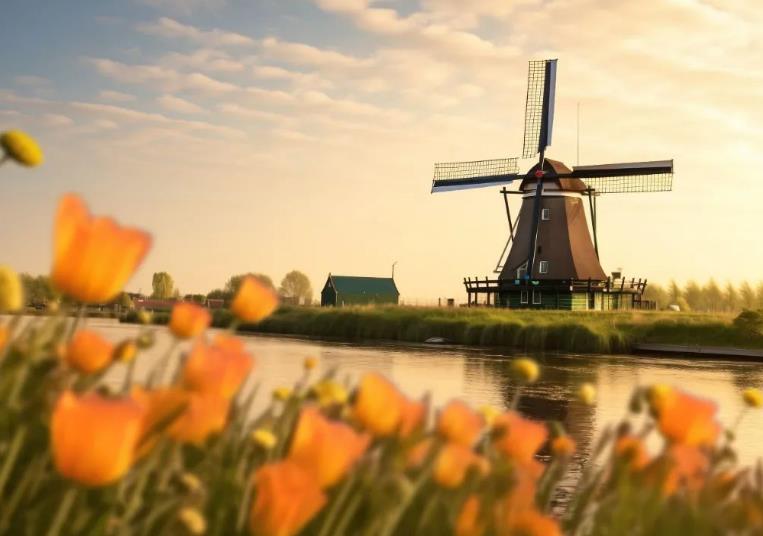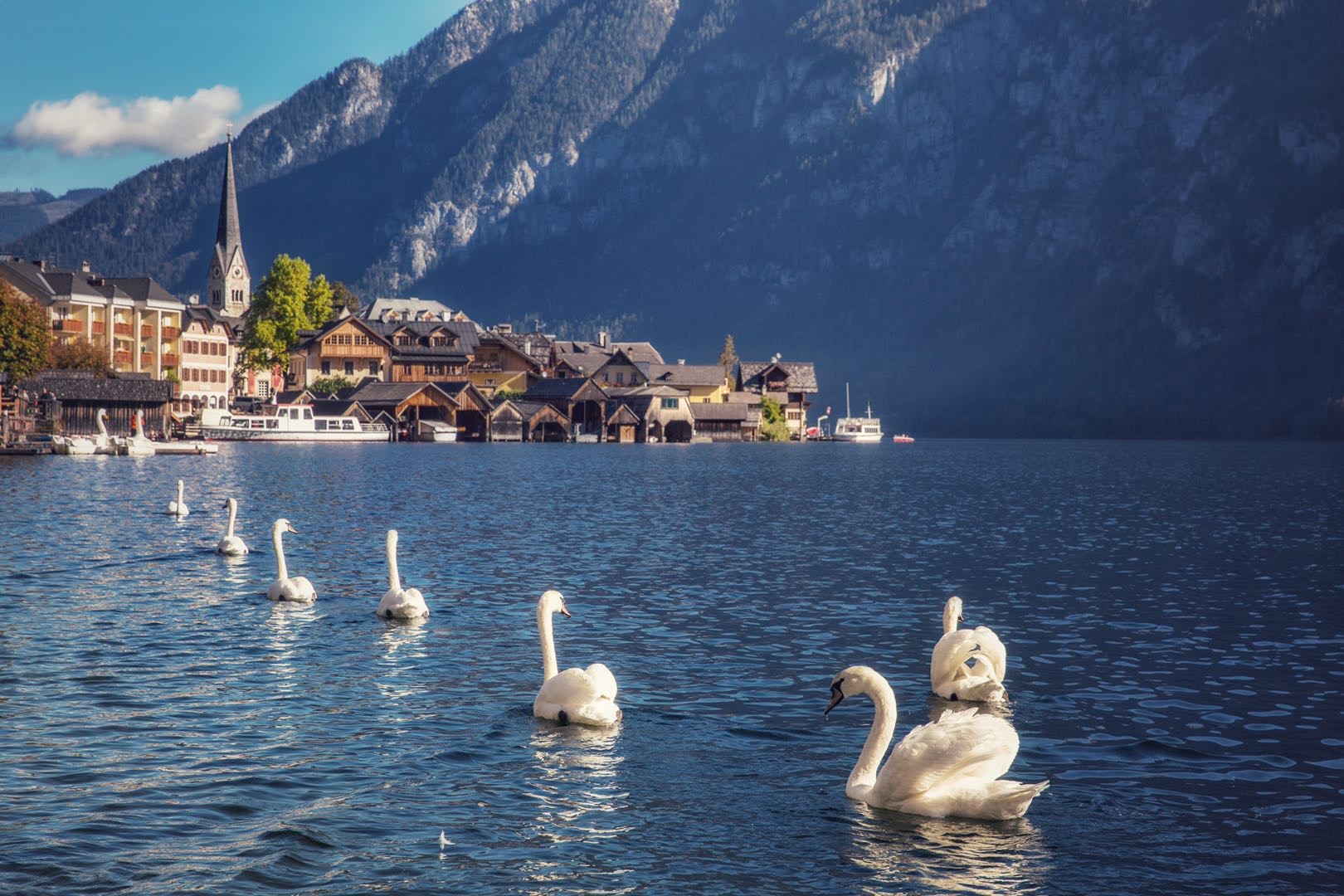https://nz.trip.com/moments/destination-grignano-1542867/
2025 Grignano Travel Guide: Must-see attractions, popular food, hotels, transportation routes (updated in December)
Popular Attraction in Grignano
Miramare Castle
(9)All Trip Moments about Grignano
Miramare Castle Trieste 🏰
#timetotravel Miramare Castle in Trieste, Italy, is an enchanting gem perched on the Adriatic coast. My visit to this magnificent palace was a journey into the opulence of the 19th century. The castle's white façade, set against the backdrop of the azure sea, is a sight to behold. The interiors are a showcase of imperial grandeur, with sumptuously decorated rooms, fine art collections, and breathtaking sea views from every window. The beautifully landscaped gardens surrounding the castle are a serene oasis, offering a perfect blend of formal and natural beauty. What truly captivated me was the history of Maximilian and Charlotte, the former residents of Miramare. Their tragic story adds a poignant layer to this already captivating place. Miramare Castle is a must-visit for history and architecture enthusiasts. It's a place that leaves you with a profound appreciation for art, history, and the sheer beauty of Italy's coastline. #trieste #italy #castle #instatravelFlorinM9Sunlit Waterside🌊
#falladventures Here’s why you really should visit Castello di Miramare: The setting is unreal — a bright white castle sitting right on the Adriatic, with the sea surrounding it on three sides 🌊🏰 Few places in Europe blend architecture and coastline so perfectly. The interiors are preserved exactly as they were in the 1800s, so you literally walk through the life of Archduke Maximilian — naval-themed rooms, royal salons, huge sea-facing windows, all untouched in time ✨ The park is one of the most peaceful spots around Trieste: kilometres of forest paths, hidden viewpoints, small ponds and exotic plants 🌿 It feels like a quiet escape even when the city is busy. The light is magical. Early morning or sunset turns the castle and sea into glowing colours, making it a dream for photography and slow scenic walks 🌅 It’s also super easy to reach from Trieste and makes a perfect half-day trip that mixes history, nature and pure seaside beauty — a combination that’s rare and unforgettable 💙Ana GashtarovaPalace Serenity🏰
#falladventures Castello di Miramare sits right on the Adriatic and feels like a dreamy seaside palace just outside Trieste 🌊🏰 Here’s a smooth guide with emojis and no bolds: The castle was built in the 19th century for Archduke Maximilian and still has its original interiors, so walking through feels like stepping into imperial life ✨ Rooms are filled with wood panels, naval touches and huge windows framing the sea. The real magic is outside. The surrounding park is huge, peaceful and full of winding paths, tiny viewpoints, ponds and exotic plants 🌿 You can stroll down to the water for perfect blue-on-blue views, especially at sunrise or sunset 🌅 There’s a small marina nearby where the water is crystal clear, and you can walk along the shore toward Barcola, Trieste’s favourite seaside promenade 🚶♀️ Getting there is easy: take bus 6 or 36 from Trieste, or enjoy the scenic coastal walk from Barcola if you like long strolls 🚏 It’s one of the most romantic and relaxed spots in the region, mixing history, nature and sea breeze in one place 💙Ana Gashtarova1Miramare Castle: The Castle Built for Love (and Cursed by Love)
#falladventures Perched on the Gulf of Trieste, Emperor Franz Joseph had this dazzling white castle built between 1856 and 1860 for his beloved wife Charlotte of Belgium. Archduke Maximilian personally designed every detail to create the perfect love nest overlooking the sea they both adored. Here they spent their happiest days… until Maximilian left for Mexico and was executed in 1867. Charlotte went mad with grief. Ever since, no one who has slept a full night inside has enjoyed long life or happiness: the “Miramare curse” struck Duke Amedeo d’Aosta (dead within months) and even the American general who lived there in 1945. A breathtaking castle born of pure love, forever marked by eternal tragedy.Belinda S.GTrieste — Edge of Sea and Story
✨ The Adriatic greeted us at Trieste Centrale, salt in air and pastiche of Austro-Italian architecture surrounding the waterfront. 🌊 🚢 Walk the Riva for café culture (€5 cappuccino), then ferry to the Castello di Miramare (€11) for sea-cliff romance. Stay at Savoia Excelsior (~€230/night) where balconies open to blue infinity. 🍝 Dinner: scampi risotto (~€28) and a bottle of local white (~€16). 💡 Pro Tip: Visit late September for seafood festivals and lesser crowds; sunset on Piazza Unità framed by Montedoro’s light is pure viral gold. Here, city met sea, and I realised our next story didn’t begin in one place—it rose at the edge of somewhere new. I wanted to ask him to stand beside me. #FallAdventures #Trieste #ItalyCoast #CoupleTravel #loveailandloveAIland1🏰 Miramare Castle – The Fairytale Palace by the Adriatic
#hellohalloween #stunningview #MiramareCastle #Trieste #ItalyTravel #AdriaticDream #FairytaleCastle #HistoricBeauty #CoastalItaly #RomanticDestinations #ItalianCharm ✨ Perched gracefully above the blue waters of the Adriatic Sea, Miramare Castle is a masterpiece of 19th-century romance and royal elegance. Built for Archduke Ferdinand Maximilian of Austria and his beloved Charlotte of Belgium, this white limestone castle feels straight out of a fairytale. 💙👑 Step through its grand halls filled with original furnishings, royal portraits, and glittering chandeliers — each room whispering stories of love, dreams, and destiny. Wander through the lush botanical park, home to rare plants and peaceful walking paths, and watch the sun sparkle across the sea from its terraces. 🌿🌊 Whether you’re exploring the lavish interiors or soaking up the sea breeze from the gardens, Miramare Castle promises a magical blend of history, beauty, and serenity. 🌅 📍 Location: Gulf of Trieste, Italy 🕰️ Best Time to Visit: Late afternoon for golden light over the sea 🎟️ Highlights: Ornate royal rooms, panoramic sea views, 22-hectare romantic park 💖 Why You’ll Love It: At Miramare Castle, every step feels like walking through a royal dream — a timeless escape where the Adriatic meets elegance. 🇮🇹✨Shahin Alom - RU🌊 Trieste – Italy’s Hidden Gem by the Adriatic Sea
#hellohalloween #stunningview #Trieste #ItalyTravel #AdriaticCoast #HiddenGem #EuropeanCharm #HistoricPort #MediterraneanVibes #ItalianCulture #CityByTheSea ✨ Tucked away in Italy’s northeast corner, where Italy meets Slovenia, lies the enchanting port city of Trieste — a place where sea breezes, coffee culture, and history blend beautifully. ☕🏛️ Once part of the Austro-Hungarian Empire, Trieste is a melting pot of cultures — Italian, Slavic, and Central European — giving it a unique, elegant charm unlike any other Italian city. 💫 Wander through Piazza Unità d’Italia, Italy’s grandest seaside square; explore the majestic Miramare Castle overlooking the turquoise Adriatic; or lose yourself in the city’s famous literary cafés that once inspired writers like James Joyce and Italo Svevo. 📚🌅 📍 Top Attractions: Miramare Castle 🏰 – A fairytale palace on the sea Piazza Unità d’Italia 🌊 – The heart of the city Cathedral of San Giusto ⛪ – Stunning views from the hilltop Trieste’s Coffee Houses ☕ – A rich café tradition Canal Grande di Trieste 🚤 – A perfect sunset stroll 💡 Why Visit Trieste? Because it’s a city of contrasts and calm — where old-world elegance meets seaside serenity. 💖 From its grand boulevards to its gentle Adriatic waves, Trieste whispers stories of empire, art, and timeless beauty. 🌍🇮🇹Shahin Alom - RUCastello di Miramare – A Romantic Seaside Palace in Trieste
#mytraveldiary Overlooking the shimmering waters of the Gulf of Trieste, Castello di Miramare is a 19th-century palace that radiates elegance and romance. Built between 1856 and 1860 for Archduke Ferdinand Maximilian of Habsburg and his wife Charlotte of Belgium, the castle combines imperial grandeur with a dreamlike coastal setting. Ambience & Setting The white limestone castle rises gracefully above the Adriatic Sea, framed by lush landscaped gardens and panoramic terraces. Inside, lavishly preserved rooms showcase the tastes and lifestyle of the Habsburg court, while the surrounding park offers peaceful walks among exotic plants, fountains, and sweeping sea views. Highlights • State Rooms – Richly decorated interiors featuring original furniture, tapestries, and portraits of the imperial family. • Maximilian’s Apartments – Personal living quarters that reveal a more intimate glimpse into the couple’s lives. • Gardens & Grounds – 22 hectares of landscaped parkland with rare plant species, statues, and scenic pathways. • Terraces & Sea Views – Unforgettable panoramas of the Adriatic coastline and Trieste’s harbor. • Historical Significance – Closely tied to the tragic fate of Maximilian, later Emperor of Mexico, and Charlotte. Practical Info • Location: Trieste, Friuli Venezia Giulia, Italy. • Facilities: Visitor centre, café, bookshop, guided tours, gardens. • Operating Hours: Open daily; hours vary by season. • Admission: Ticketed entry for the castle and grounds. Why It’s Worth Visiting Castello di Miramare is not just a palace—it’s a love story set in stone, steeped in history and romance. Its dazzling architecture, exquisite interiors, and gardens by the sea make it one of Italy’s most atmospheric and enchanting castles. Final Thoughts Whether wandering its opulent halls, strolling through its gardens, or gazing out over the Adriatic, Castello di Miramare offers an unforgettable blend of imperial charm and seaside beauty—a jewel of Trieste that captures both history and imagination.Croffle009Admiring the Regal Beauty of Castello di Miramare in Friuli Venezia Giulia
#mytraveldiary Castello di Miramare, Viale Miramare, Trieste, Italy, 34016, is a splendid 19th century residence overlooking the Adriatic Sea. Built for Archduke Ferdinand Maximilian of Habsburg and his wife Charlotte of Belgium, the castle combines elegance with romantic charm. Surrounded by lush botanical gardens filled with rare plants and scenic pathways, it offers visitors both history and natural beauty. Inside, the richly decorated rooms remain well preserved, showcasing imperial taste and refined details. The panoramic views from the castle terraces are breathtaking, with the sea stretching endlessly against the dramatic coastline. Easily accessible from Trieste, Castello di Miramare is a destination that blends culture, architecture, and nature in perfect harmony. It stands as a timeless symbol of grandeur and serenity in Friuli Venezia Giulia.rizkiririMiramare castle what a gem
SuspannaCastello di Miramare 👑
Castello di Miramare is a stunning castle located on the northern coast of Italy, near Trieste. Overlooking the Adriatic Sea, this 19th-century castle is a perfect blend of historic architecture and natural beauty. Surrounded by lush gardens and offering panoramic views, it’s a peaceful escape from the city. The interior of the castle is just as impressive, with beautifully preserved rooms showcasing the opulence of the time. Visitors can explore the various halls, each filled with fascinating history and intricate details. The surrounding park and coastline make it a wonderful place for a leisurely walk, offering scenic views and a serene atmosphere. For anyone interested in history, architecture, or simply looking to enjoy a beautiful, tranquil location, Castello di Miramare is a must-visit destination. 🥰❤️🥰 #solotrip #solotravel #travel #seascapes #paradisePiccolaBionda1Hidden Gem ❤️
This charming city boasts a rich history, stunning sunsets, and a welcoming atmosphere that makes it feel like home. The ‘locals’ are incredibly friendly, adding to the overall warmth of the place. Whether you're looking for cultural experiences, outdoor adventures, or just a relaxing day, there's always something to do year-round. The food scene is diverse, with a wide variety of restaurants, tavernas, bars, and coffee shops offering something for every taste. From fresh seafood to traditional dishes, you’ll find plenty to satisfy your cravings. While the city is best explored on foot to truly take in its beauty and atmosphere, public transport is also convenient and easy to navigate. No visit is complete without exploring Castle Miramare and its beautiful gardens. It's an absolute must-see for anyone in the area. If you have more time, I highly recommend visiting Castle Duino as well. Both castles are impeccably preserved, offering spectacular views and fascinating histories that bring the past to life. ❤️❤️❤️❤️❤️ #travel #solotravel #seascapes #museums #myfavoritecity #trieste #inlove #willbebackagainPiccolaBiondaMiramare castle park is beautiful
It's really picturesque. The entrance fee for the castle is inexpensive only cost 12 euros. It's well worth visiting because there are so many historical artefacts. Some beautiful renaissance paintings and lots of things to learn about. i took number 6 bus from center to reach this castle.Time taken 30 minutes. The Park in the castle is freely accessible from the entrances on Viale Miramare, Grignano and Via Beirut (see opening hours on the side). Every first Sunday of the month, admission to the Castle is free .I think we definitely need to walk through the garden area an sip a coffee at cafe massimiliano - amazing garden!Fei Xien Chang1Miramare Castle Park 🇮🇹
#traveldiaries I spent a beautiful afternoon at the Miramare Castle Park near Trieste, and it was such a peaceful escape! 🌿 The park surrounds the stunning Castello di Miramare, and entry to the grounds is free, so you can stroll around as long as you like. The gardens are lush and well-kept, with paths winding through dense trees, flowerbeds, and fountains. The views of the Adriatic Sea from the cliffs are breathtaking, especially at sunset. I even spotted a few swans gliding through the ponds—it felt like something out of a fairy tale. There’s plenty to see inside the park, from the tiny greenhouses to the statues scattered around, but my favorite spot was the small pier where you can sit and watch the waves roll in. The castle itself is worth visiting too if you’re up for a tour. After the park, I took a short drive into Trieste to enjoy some gelato by the harbor. If you’re in the area, Miramare Castle Park is perfect for a relaxing, scenic day out. #MiramareCastle #TriesteAdventures #ItalianGardens #SeasideViews #NatureEscape #FriuliVeneziaGiuliaLexusLC5001

Popular Grignano topics

2025 Recommended Attraction in Grignano (Updated December)
18 posts

2025 Recommended Guides in Grignano (Updated December)
11 posts

2025 Recommended Comprehensive guides in Grignano (Updated December)
3 posts

Destinations related to Grignano

2025 Venice Travel Guide: Must-see attractions, popular food, hotels, transportation routes (updated in December)
1674 posts

2025 Hallstatt Travel Guide: Must-see attractions, popular food, hotels, transportation routes (updated in December)
511 posts

2025 Bologna Travel Guide: Must-see attractions, popular food, hotels, transportation routes (updated in December)
161 posts
Post
More recommendations
Popular Trip Moments
Sunlit Waterside🌊 | Palace Serenity🏰 | Miramare Castle: The Castle Built for Love (and Cursed by Love) | Trieste — Edge of Sea and Story | Castello di Miramare – A Romantic Seaside Palace in Trieste | Admiring the Regal Beauty of Castello di Miramare in Friuli Venezia Giulia | Castello di Miramare 👑 | Hidden Gem ❤️ | Miramare castle park is beautiful | Miramare Castle Park 🇮🇹 | Miramare Castle Trieste 🏰
Recommended Attractions at Popular Destinations
Popular Attractions in Bangkok | Popular Attractions in Manila | Popular Attractions in Tokyo | Popular Attractions in Taipei | Popular Attractions in Hong Kong | Popular Attractions in Seoul | Popular Attractions in Kuala Lumpur | Popular Attractions in Los Angeles | Popular Attractions in Shanghai | Popular Attractions in New York | Popular Attractions in Shenzhen | Popular Attractions in Osaka | Popular Attractions in Singapore | Popular Attractions in London | Popular Attractions in Guangzhou | Popular Attractions in San Francisco | Popular Attractions in Beijing | Popular Attractions in Macau | Popular Attractions in Bali | Popular Attractions in Jakarta | Popular Attractions in Paris | Popular Attractions in Ho Chi Minh City | Popular Attractions in Istanbul | Popular Attractions in Phuket | Popular Attractions in Chicago | Popular Attractions in Seattle | Popular Attractions in Toronto | Popular Attractions in Orlando | Popular Attractions in Cebu | Popular Attractions in Chiang Mai
Popular Restaurants in Grignano
Popular Ranked Lists
Top 50 Must-Visit Restaurants in Milan | Popular Best Things to Do in Ziyuan | Popular Premium Hotels in Sumur Bandung | Top 50 Luxury Hotels near Forcalquier | Top 10 Best Things to Do in Dallas | Popular Premium Hotels in Pandaan | Top 50 Must-Visit Restaurants in Zurich | Popular Luxury Hotels in Tegernsee Lake | Popular Best Things to Do in Lanxi | Top 50 Must-Visit Restaurants in Dalian | Top 50 Must-Visit Restaurants in Lijiang | Top 20 Must-Visit Restaurants in Semporna | Popular Best Things to Do in Meizhou | Top 50 Must-Visit Restaurants in Las Vegas | Popular Premium Hotels in Valles Oriental | Popular Luxury Hotels in Windhoek | Popular Premium Hotels in La Quinta | Top 10 Luxury Hotels near Bedford Park | Popular Premium Hotels in Kufri | Popular Premium Hotels Near Lipetsk | Top 50 Must-Visit Restaurants in London | Top 50 Must-Visit Restaurants in Xishuangbanna | Top 50 Must-Visit Restaurants in Hanoi | Popular Best Things to Do in Renhua | Popular Best Things to Do in Nan'ao | Popular Best Things to Do in Zhongxiang | Top 20 Best Things to Do in Christchurch | Popular Premium Hotels in Leukerbad | Popular Best Things to Do in Linhai | Top 50 Must-Visit Restaurants in Yantai
About
Payment methods
Our partners
Copyright © 2025 Trip.com Travel Singapore Pte. Ltd. All rights reserved
Site Operator: Trip.com Travel Singapore Pte. Ltd.
Site Operator: Trip.com Travel Singapore Pte. Ltd.